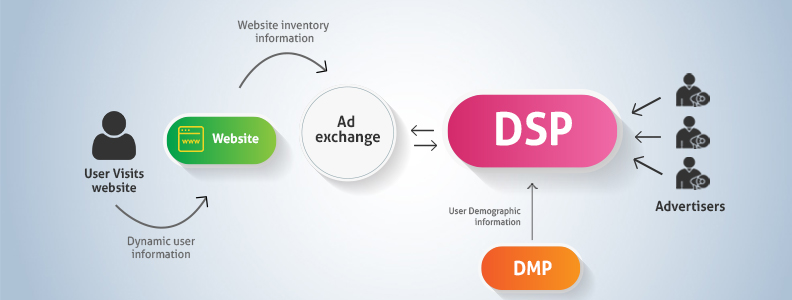“If you’re not putting out relevant content in relevant places, you don’t exist.”
-Gary Vanerchuk
Ever observe how you end up having ads stalk you? Say for example, you check an item on Flipkart but you don’t make the purchase only to have the ad follow you almost everywhere you go online. They pop up on Facebook, Instagram, certain other websites that you visit and even emails.
This form of intelligent marketing can only be made possible if the advertiser really knows you – as a consumer. Which is exactly why despite the rain of digital ads online, there are very few smart ones that grab your attention. That’s the customer’s viewpoint. Let’s take a look at the marketer and advertisers’ points of view.
They sit behind computer screens launching marketing campaigns, chasing marketing KPIs, measuring ad performances, reporting and performing a million other bits. With the dawn of all things “smart” and technology platforms to make lives easier, one could say that advertising on different channels can be accomplished pretty much effortlessly. Speaking of making lives easier in the world of advertising, traditional direct buying processes are taking a seat back given the birth of new buying methods on platforms that better connect media buyers and sellers. For example, programmatic advertising automates the process of buying and selling of online advertisements. One of the primary buying tool/platform facilitating programmatic buying is a DSP.
It stands for a Demand-Side Platform. Simply put, it’s an automated buying platform used by advertisers (aka media buyers) and marketing agencies to purchase digital ad inventory from the media owners (aka publishers). A DSP will have basic targeting functionalities like start date and end date, geo targeting, budget pacing, frequency capping, day parting, device targeting and contextual targeting.
DSP allows advertisers to buy impressions from a range of publisher sites that have the specific kind of audience which is of interest to the advertiser. The medium through which publishers make ad impressions available for buyers (advertisers) is a marketplace called an ad exchange. A DSP is used to manage multiple ad exchange accounts by the buyer. Not just that, they also act as a central hub for handling every data that one can bring in to help with the RTB (real-time bidding) valuation which is very crucial to successful ad exchange management. DSP automates bidding on deals that close at lighting speed, using sensible parameters which are set by the advertiser to control their budget and optimize spend. Decision-making is also automated by demand-side platform with the help of algorithms to ensure if deals are even worth bidding on in the first place. This gives advertisers a transparent view of websites running their ads to ensure they’re brand appropriate.
Is your demand-side platform really working for you?
Advertisers must ask themselves what exactly a DSP helps them accomplish. A strong DSP consists of efficiency and performance, both of which are important in determining the success of your marketing campaigns. It is also important to understand that all DSPs are designed and developed with different capabilities. You as an advertiser must first determine the campaign needs (reach, targeting and cost) and if the solution your’re looking for aligns with what a DSP can deliver.
With the evolution of programmatic buying, the growth of demand-side platform is anticipated to go hand in hand as it introduces advanced targeting tools, providing options to target behaviourally, geographically, and even options to retarget. Advertisers can generate value and increase return on investments (ROI) based on how well they understand the real consumer needs of the target group. Your DSP is a means of presenting your brand and its offerings to potential customers in the form of ads, marketing messages and emails, but having a layer of intelligence to guide you will only fasten your reach to your most convertible customers at actual moments of (purchase) intent.
“Hey! We haven’t seen you for a while on our website, come and check out what we have prepared for you.” Such mailers are not unusual. Whether your’re a retailer or a bank you would at some point consider sending out mailers. If you’re an e-commerce company, how are you reaching your potential customers? Oftentimes, you combine internal data to guide your real-time bidding (RTB) approach. E-commerce giants also often target frequent shoppers with various promotional offers and discounts designed specifically for them. This also helps in maintaining your brand image among the existing customers. Banner ads displayed with the help of RTB have the potential of replacing e-mail, gift cards, discount coupons and even newsletters? What do you think, let us know in the comments below.
Stay tuned for our next blog, where we talk about Real-Time Bidding and how advertisers and publishers make it a win-win.
